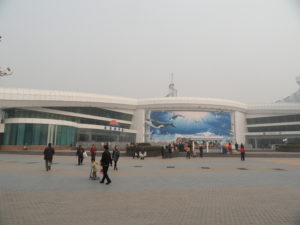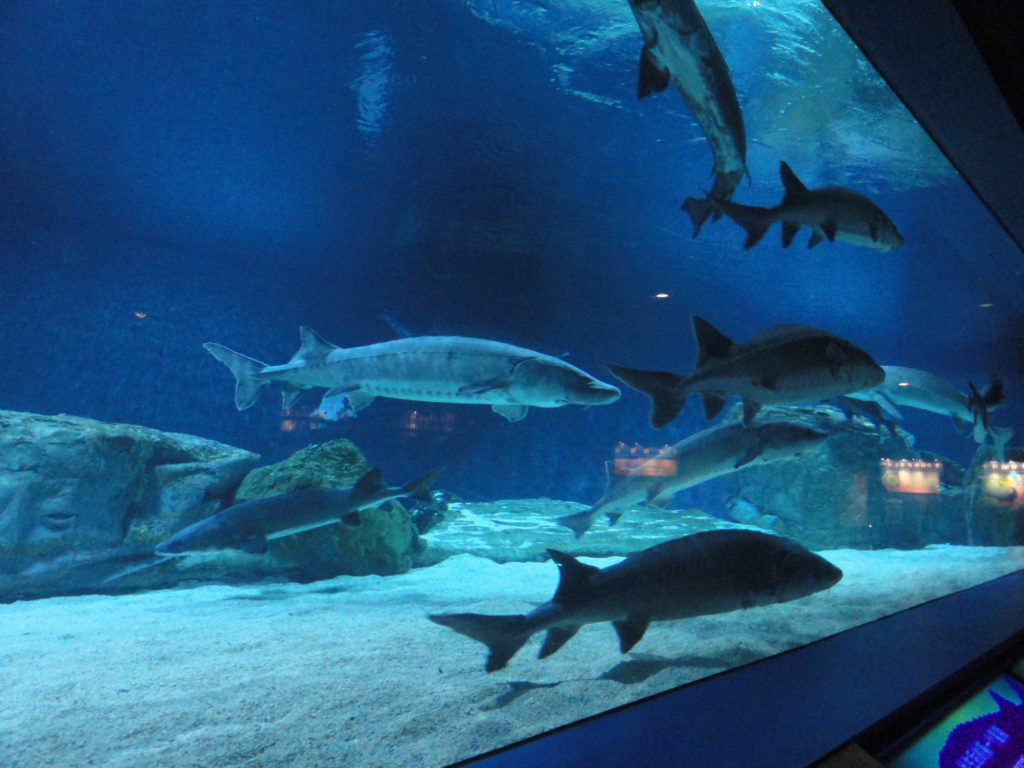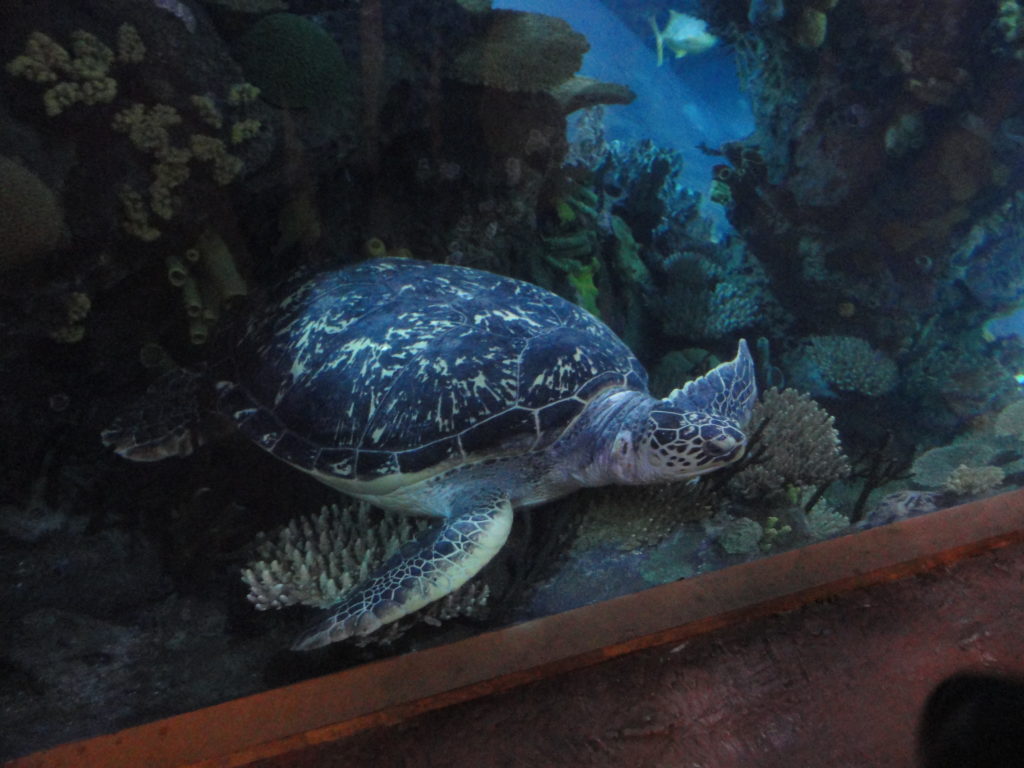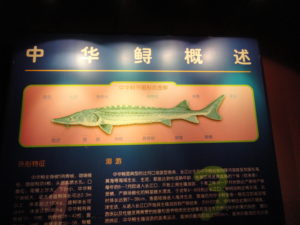After visiting Tian’anmen Square, the Forbidden City, and Mao’s Mausoleum in Beijing, head on over to the Beijing Aquarium. Located within the Beijing Zoo, the aquarium is the largest inland aquarium in the world. One of its specialties is the Rare Chinese Sturgeon Hall.

The building itself is shaped like a huge conch shell. It relies on over 18,000 tons of artificial seawater to highlight seven main sections: Rainforests, Coral Reefs, Sharks, Whales, a Touch Pool, a Marine Theater, and the aforementioned Sturgeon Hall. Over 1000 marine and freshwater species are bred on site.

Of the 41 aquariums around the world I’ve visited, this one is unique in that it has a large area devoted to sturgeon. These ancient fish in the family Acipenseridae are an oddity of nature. Their skeletons are almost entirely cartilaginous, like sharks, despite being classified as bony fishes since their ancestors actually had bony skeletons. Sturgeons also are at least partially covered with bony plates called scutes instead of scales. Like catfish, they have four barbels, sensory organs near their wide, toothless mouths, that they drag along the bottom substrate as an aid in navigation and food gathering. They are an odd fish indeed.
Most aquariums toss one or a few sturgeon into the big tanks with sharks and other common fish. In Beijing there are dozens of representatives of the 27 known species of the world. The highlight is the Chinese sturgeon (Acipenser sinensis), a critically endangered species considered, like the giant panda, a national treasure in China. Sadly, like many species of sturgeon, the Chinese sturgeon is nearly extinct in the wild due to overfishing and habitat loss.
The aquarium doesn’t stop there. There are also large tanks with beautiful white beluga whales…

…many species of moray eels…

…and quite a few sea turtles.

Given my previous work with jellyfish I’m always drawn to that section of aquariums and the Beijing Aquarium has one of the best displays I’ve seen. Quite a few tanks exhibit different species, with a variety of light effects to highlight their beauty.

Overall I was greatly surprised – and impressed – by the size and quality of the aquarium. During my visit it seemed clear that the zoo and aquarium cater more to local Chinese rather than tourists, most of whom never get beyond the major tourist attractions mentioned in the first sentence above. This focus is emphasized by the signage, most of which is only in Chinese.

So if you’re in Beijing, take a side trip to the Beijing Aquarium. It’s about 3 miles or so northwest of Tian’anmen Square in the Beijing Zoo, reachable by taxi, bus, or even easier, via subway line 4. You won’t be disappointed. More information here.
David J. Kent has been a scientist for thirty-five years, is an avid science traveler, and an independent Abraham Lincoln historian. He is the author of Tesla: The Wizard of Electricity (now in its 5th printing) and two e-books: Nikola Tesla: Renewable Energy Ahead of Its Time and Abraham Lincoln and Nikola Tesla: Connected by Fate. His book on Thomas Edison is due in Barnes and Noble stores in July 2016.
Follow me by subscribing by email on the home page. And feel free to “Like” my Facebook author’s page and connect on LinkedIn. Share with your friends using the buttons below.











41 aquariums? That has to be a record.
Could be.